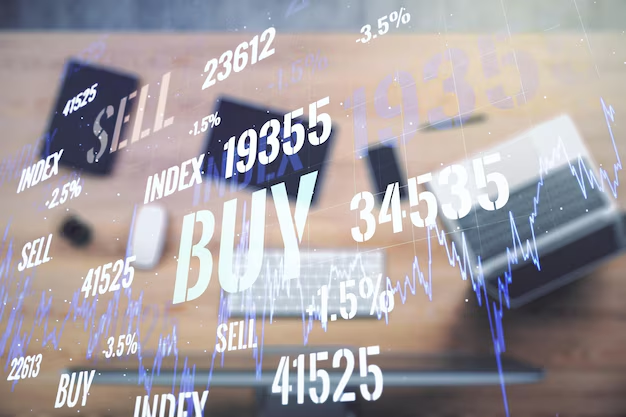Understanding ETF Splits: What Investors Need to Know
If you're delving into the world of Exchange Traded Funds (ETFs), you might wonder how they manage price changes and liquidity. A common query that arises is: Do ETFs split? While many are familiar with stock splits, the notion of an ETF splitting might sound a bit foreign. Here, we'll explore the concept in detail, providing clarity on what ETF splits entail, why they occur, and how they can impact your investments.
📈 What Are ETF Splits?
An ETF split functions similarly to a stock split. When an ETF's price becomes high enough that it may deter investors, the fund management might opt for a split to make shares more affordable and attractive. For example, in a 2-for-1 split, for every share an investor holds, they receive an additional share, and the price of each share is halved. The total value of the holding remains the same.
Why Do ETFs Split?
1. Accessibility: High share prices can be a barrier, particularly for new or smaller investors. Splitting an ETF lowers the share price, making the ETF more accessible and potentially increasing liquidity.
2. Marketing Appeal: A lower price per share can psychologically appeal to retail investors, suggesting affordability and potential for price appreciation, even though the percentage gains remain the same.
3. Improved Liquidity: Lower-priced shares can increase trading volume and liquidity. More investors trading at lower prices can make it easier to buy and sell without affecting the ETF’s market price significantly.
Comparison with Stock Splits: Much like stock splits, ETF splits do not change the market capitalization or an investor's equity value. The split merely increases the number of outstanding shares while reducing the price accordingly.
🚀 How Do ETF Splits Impact Your Investment?
Positive Impacts
Enhanced Liquidity: Splitting an ETF often leads to higher trading volumes, making it easier to trade shares quickly and efficiently.
Broader Market Participation: By reducing the price per share, more investors can enter the market, increasing investor participation and possibly leading to higher demand for the ETF.
Margin Flexibility: Lower price per share allows for more granule buying power, which can be advantageous for strategies around margin purchases or incremental investing.
Potential Concerns
Market Perception: Some investors may misunderstand the implications of a split, thinking it indicates a strategic shift in the ETF's management or future performance.
Administrative Adjustments: Investors need to track how a split affects the number of shares they own and the new price basis, which can introduce complexity to personal financial tracking.
Example Scenario
Imagine an ETF trading at $200 a share undergoes a 2-for-1 split. You own 100 shares worth $20,000. After the split, you'll own 200 shares at $100 each, still totaling $20,000. The split has not changed your investment's overall value; it has merely adjusted the number of shares and the price per share.
📊 Types of ETF Splits
There are primarily two types of splits that ETFs can undergo:
Forward Splits
Forward splits increase the number of shares and make the per-share price more affordable. This type is common and initiated to enhance marketability and broaden investor participation.
Reverse Splits
Conversely, a reverse split is used when an ETF's price becomes very low. It consolidates shares to lift the per-share price. For instance, in a 1-for-4 reverse split, every four shares are converted into one, multiplying the price per share fourfold. This can help ETFs meet exchange listing requirements and appear more robust from a pricing standpoint.
A Quick Reference on ETF Splits
Here's a simplified summary to pocket:
- Forward Split: More shares, lower price per share (e.g., 2-for-1 split).
- Reverse Split: Fewer shares, higher price per share (e.g., 1-for-4 split).
- Impact: No change to overall investment value; affects share count and individual share price.
📚 Beyond Splits: Other Considerations for ETF Investors
☑️ Understanding ETF Composition
When investing in ETFs, it's crucial to understand the fund's holdings and strategy. ETFs are often passively managed, tracking various indexes. Be sure to review each ETF's prospectus or management commentary to gain insight into its strategy and potential risks.
📉 Monitoring Expense Ratios
Look out for expense ratios, which represent the fund's operating costs relative to its assets. Lower ratios can be beneficial, particularly in long-term investment scenarios.
📊 Evaluating Performance
Past performance of the underlying index and the ETF’s tracking accuracy can give insights into the fund’s potential for future success. Remember that historical performance does not guarantee future results.
📝 Key Takeaways for ETF Investors
- ETF splits do not change the overall value of your investment but adjust the price and share count.
- Splits can enhance liquidity and market participation, potentially benefiting both the ETF and its investors.
- Forward splits reduce share prices; reverse splits increase share prices.
- Always consider the broader context, including ETF composition, management approach, and expense ratios, to make informed investment decisions.
Understanding the mechanics and implications of ETF splits can empower investors to navigate the ETF landscape with confidence. Whether you're a seasoned investor or just starting, the knowledge of how splits function can help optimize your investment strategy, making ETF investments more aligned with your financial goals.
